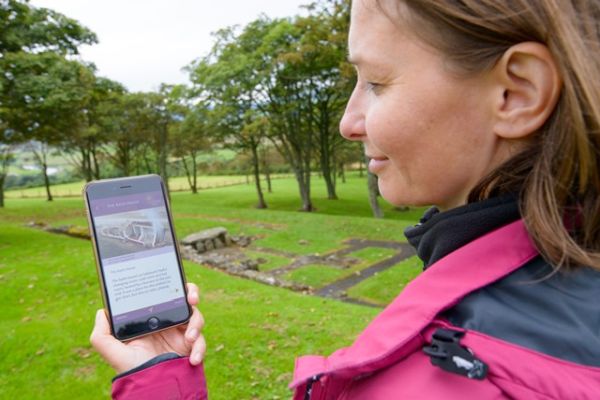Patricia WEEKS | Erik DOBAT | Christof FLÜGEL | Markus GSCHWIND | Carsten HERMANN | Al RAWLINSON | Sandra WALKSHOFER | Lyn WILSON
(Historic Environment Scotland, Edinburgh, UK)
Keywords: Antonine Wall, Mobile Information Systems, Augmented Reality, Limes, World Heritage;
Abstract:
The extent to which in-situ remains of the Frontiers of the Roman Empire World Heritage Site are visible today varies greatly along this ancient border in the UK and Germany, and which originally stretched across 19 modern countries on three continents.
Archaeological finds are generally stored off-site, in museums far away from the excavated site. Understanding the human history of a site becomes a challenge; all that remains are lines on the ground with no correlation to the individuals who built or inhabited those spaces. Conventional interpretation strategies rely on guide books, on reconstruction drawings and interpretation panels on site, and on visitors navigating the patchwork of archaeological sites and museums storing the associated finds. But if a site is so vast and so disconnected that no visitor can accomplish this easily, how can all the elements be brought into one place for them?
ALAPP seeks to combine the best of traditional interpretation alongside emerging technology to offer a layered approach to on-site interpretation. By re-uniting sites and artefacts, the human element is re-introduced. Different facets of information can be offered to appeal to different audience interests and the vehicle for the delivery of that information can be expanded from traditional interpretive approaches; the spoken word, video, 3D models, augmented reality. All from the comfort of the visitor’s own mobile device.
This presentation will touch on: how content has been tailored to appeal to a range of different audiences; how content has been differentiated to utilise different media; how content becomes standardised internationally, creating an instantly familiar product; how different technological approaches have been utilised in creating the app; how technology is being adapted to suit international needs; and the lessons learned by the partners in seeking solutions to some of the challenges faced.
Relevance for the conference: The ALAPP project was granted funding from Creative Europe in 2016 to create an improved version of an existing app to enhance visitor experience at the Antonine Wall in Central Scotland and on the German Limes in Lower Bavaria; available on Android and iOS the project has seen collaboration between partners in Austria, Scotland and Germany
Relevance for the session: The Partners have learned much over the last two years about audience engagement and differences between countries in delivering interpretive programmes.
Innovation: ALAPP seeks to combine the best of traditional interpretation alongside emerging technology to offer a layered approach to on-site interpretation, re-uniting sites and artefacts, and reintroducing the human element.
References:
• Erik Dobat, Sandra Walkshofer and Christof Flügel. 2013. Mainlimes Mobil: Presenting Archaeology and Museums with the Help of Smartphones, In Nigel Mills, eds. Presenting the Romans – Interpreting the Frontiers of the Roman Empire World Heritage Site, Woodbridge, The Boydell Press (2013), 103 – 111.



